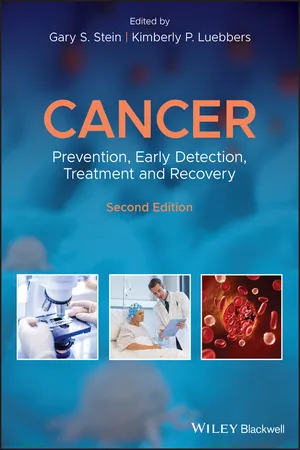OVERVIEW
Breast cancer is the most common type of cancer found in women, and the second leading cause of cancer deaths. One in eight women will develop breast cancer in her lifetime, and it is estimated that there will be 266 120 new cases of breast cancer in 2018, with 40 920 deaths [1]. While breast cancer is more prevalent in women, it also occurs in men, although much less commonly. Male breast cancer accounts for less than 1% of all cases of breast cancer, and it is estimated that there will be 2550 new cases in 2018 [1].
The incidence of breast cancer is higher in Caucasian women than in African American women, however, the mortality rate is higher in African Americans. Some of this is attributed to the higher incidence of triple negative breast cancer cases in African American women, although socioeconomic factors also play a role. Breast cancer incidence is significantly lower in Native American women compared to other ethnicities. The highest rate of breast cancer in the world is noted in women living in North America.
RISK FACTORS
There are several well‐known risk factors for the development of breast cancer including, age, menstrual and pregnancy history, genetic mutations, abnormalities in cells, breast density, obesity, and radiation therapy to the chest area. However, up to 75% of women have no identifiable risk factors [2].
Age: Breast cancer risk increases with age, and although it can occur in women of a younger age, it is relatively uncommon under the age of 40. Most breast cancers occur in women who are aged 50 years or older.
Menstrual and Pregnancy History: Early age at menarche (<12 years old), late age at first pregnancy (>30 years old), never having been pregnant, and late age at menopause (>55 years old) are all associated with an increased risk of breast cancer [3]. Having a period before the age of 12 confers a 20% higher risk of developing breast cancer compared to those who have their first period after age 14.
Genetic Mutations: The most well‐known genes associated with risk for breast cancer are BRCA1 and BRCA2. These genes account for about 10% of all breast cancers and 20–25% of hereditary breast cancers [4] and are associated with a high risk of cancer development. The likelihood of carrying a BRCA mutation is increased by the presence of the following features: early onset breast cancer, male breast cancer, bilateral breast cancer, breast and ovarian cancer in the same woman or family, and Ashkenazi Jewish heritage [2, 5].
The BRCA1 gene mutation is associated with a lifetime breast cancer risk of 55–65%, and also carries an increased lifetime risk of ovarian cancer (39%) [4]. The BRCA2 gene mutation is associated with a lifetime breast cancer risk of 45%, and an increased risk of ovarian cancer (11–17%) [4]. Other genes have been identified and are associated with a moderate or high risk of breast cancer [6]. Additional highly penetrant genes associated with high breast cancer risk include: TP53 (associated with Li‐Fraumeni syndrome), PTEN (associated with Cowden syndrome), STK‐11 (associated with Peutz‐Jeghers syndrome), CDH1 (associated with hereditary diffuse gastric cancer), and PALB2. Moderately penetrant genes (associated with lower but still elevated risk) include ATM, CHEK2, and others.
Cellular Abnormalities: The presence of atypical or abnormal cells on breast biopsy is associated with an increased risk of invasive of breast cancer. These conditions include ductal hyperplasia (slightly increased risk, 1.5–2 times higher), atypical ductal/ lobular hyperplasia (moderately increased, 4–5 times higher risk), and lobular carcinoma in situ (higher risk, 8–11 times increased).
Breast Density: There is an association between breast density and breast cancer, with the risk of breast cancer increasing with the amount of breast density. Women who have a breast density of 75% or greater are four to six times more likely to develop breast cancer when compared to women with a breast density of 10% or less [7]. Recent legislation has been enacted by several states around mandatory reporting of breast density. This has caused much confusion and anxiety for both women and their providers. Further information regarding breast density and the notification laws can be found at the following website (http://www.breastdensity.info).
Obesity: Obesity appears to be a risk factor for the development of several cancers including breast cancer. There is a modestly increased risk for breast cancer associated with obesity especially for postmenopausal breast cancer. Fat tissue produces an excess amount of estrogen, and this may influence the growth of breast cancer cells.
Radiation Therapy: Mantle field radiation (extended field radiation therapy to the neck, chest, and underarm areas used to treat Hodgkin lymphoma) before the age of 30, but especially before the age of 20, is associated with an increased risk of breast cancer. This risk is about 20–30 times that of the general population. The younger a woman was when she received radiation to the chest area, the higher her risk of developing breast cancer throughout her lifetime. Smaller doses of radiation in the form of chest x‐rays and mammograms do not carry this extent of risk.
Hormone Replacement Therapy: Hormone replacement therapy (HRT) has been associated with an increased risk for developing breast cancer. This is true for the combination of estrogen and progesterone therapy but not for estrogen alone (which is used in women who have had a hysterectomy) [8, 9]. The risk begins to increase after four years of use and decreases after the therapy is stopped.
